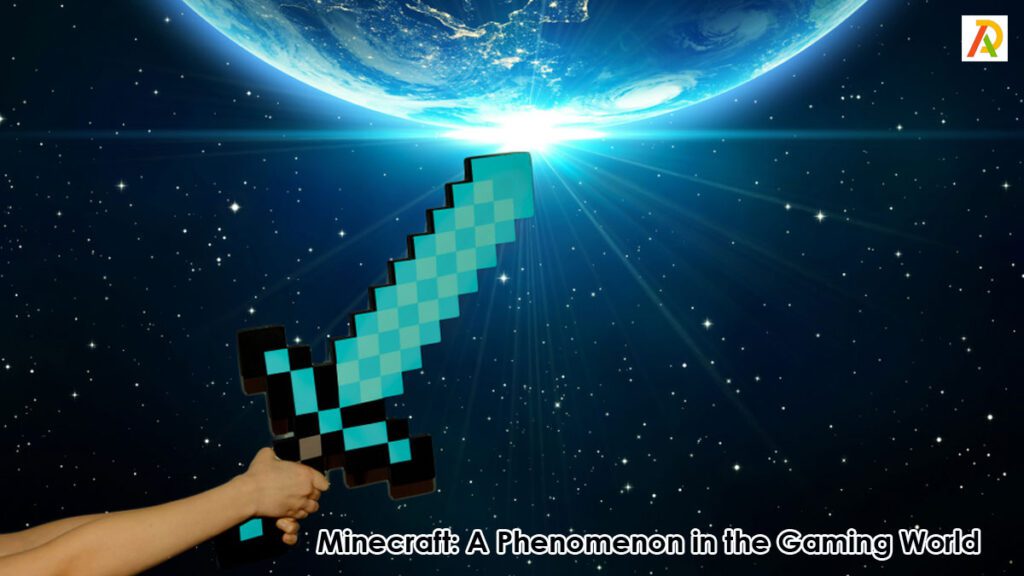Minecraft: A Phenomenon in the Gaming World

About Minecraft game
Minecraft, an indie sandbox game developed by Markus Persson and later acquired by Mojang Studios, has achieved unparalleled success since its release in 2011. This case study delves into the development process, gameplay mechanics, critical reception, and cultural impact of Minecraft. By exploring these facets, we aim to unravel the secrets behind the game’s enduring popularity and its transformative influence on the gaming industry and beyond.
Minecraft, an innovative creation that blends creativity, exploration, and survival elements, has captured the hearts of millions of players worldwide. Its success can be attributed to its unique gameplay, emphasis on player agency, and the freedom it offers to shape virtual worlds. This case study examines the key aspects of Minecraft’s journey, including its development, gameplay mechanics, critical reception, and lasting cultural impact.
Development:
Minecraft’s inception dates back to 2009 when Markus Persson, also known as “Notch,” began developing the game as a personal project. The game’s initial release as an alpha version in May 2009 garnered a small but dedicated following. Notch’s vision for the game focused on creating an open-world environment where players could build and explore to their heart’s content.
As the game gained traction, Notch founded Mojang Studios in 2010 to continue its development. The team’s commitment to engaging the community and regularly updating the game with new features, known as “snapshots,” fostered a strong bond between developers and players. The game’s open development approach allowed players to influence its future direction. This led to a collaborative and transparent development process.
Gameplay:
At its core, Minecraft is an open-ended sandbox game that empowers players to manipulate the game world through building, crafting, and exploration. The game is procedurally generated, creating an endless expanse of unique landscapes for players to discover.
Players gather resources from the environment, such as wood, stone, and minerals, to craft tools, weapons, and various other items. The game’s day-night cycle introduces survival elements. Players must fend off hostile creatures during the night while taking advantage of daylight to gather resources safely.
The creative mode allows players to build without limitations, unleashing boundless creativity. In contrast, the survival mode challenges players to manage hunger, health, and other resources, adding an element of risk and reward.
Dimensions
In Minecraft, “dimensions” refer to separate virtual worlds or realms that players can explore. Each dimension offers a distinct environment and gameplay experience. As of the latest updates in September 2021, Minecraft features three main dimensions:
Overworld: The Overworld is the primary dimension and the starting point for all players. It is a vast, procedurally generated world filled with biomes, terrain, and structures. Players can gather resources, build structures, and explore the diverse landscapes of the Overworld.
Nether: The Nether is a dark and dangerous dimension that players can access by creating a nether portal. It is a hellish realm characterized by lava lakes, treacherous terrain, and unique mobs. The Nether features Nether fortresses, bastions, and various resources that players can use to craft powerful items.
End: The End is a mysterious and surreal dimension accessible through an End portal found in strongholds in the Overworld. It is a desolate, otherworldly realm featuring floating islands made of End stone and End cities. The End is home to the Ender Dragon, the main boss of the game. Players must defeat it to access the End cities and obtain valuable loot.
Each dimension adds depth and variety to the Minecraft experience. It provides players with different challenges and opportunities for exploration and adventure. It’s worth noting that new dimensions or updates may have been introduced since the last update. Therefore, it is recommended that users check the latest versions of the game for any additional dimensions.
Who are the publishers of the Minecraft Game?
Given below are the companies that publish this popular indie sandbox game:
- Xbox Game Studios
- Mojang Studios
- Sony Interactive Entertainment
Who are the designers of the game?
The game is the brainchild of the following individuals:
- Jens Bergensten
- Markus Persson
Who are the animation artists of this game?
The animation artists instrumental in the game’s phenomenal success are:
- Jasper Boerstra
- Markus Toivonen
- Kristoffer Zetterstrand
Who are the composers of this game?
The following are the composers of this far-famed game:
- Lena Raine
- C418 (Daniel Rosenfeld)
- Aaron Cherof
- Kumi Tanioka
To which series does this game belong?
This game belongs to the Minecraft series.
What are the engines that help in developing the game?
Given below are the software frameworks or game engines tailored for developing this game:
- Render Dragon (Bedrock)
- Engine Lightweight Java Game Library (Java)
What are the platforms on which this game runs?
This game runs on platforms like:
- macOS
- Windows
- Linux
When did the official launch of the game take place?
The game became officially available on November 18, 2011.
To which genre does the game belong?
The game belongs to the following genres:
- Survival
- Sandbox
What are the modes in which players can play the game?
Both single-player and multi-player modes for playing the game are available.
Gaming modes
Minecraft offers a diverse range of game modes that cater to players with varying preferences and playstyles. Each mode presents a distinct experience, ensuring that players can find their ideal Minecraft adventure. Here, we explore some of the unique game modes that have contributed to Minecraft’s enduring popularity:
1. Survival Mode:
Survival mode sets players in a challenging world, where they must gather resources, build shelters, and fend off hostile creatures to survive. Hunger, health, and limited resources add an element of realism, making it a thrilling test of ingenuity and strategy.
2. Creative Mode:
In this mode, players are granted unlimited resources and invincibility, allowing them to focus solely on their creative vision. Build awe-inspiring structures, landscapes, and entire worlds without limitations, making it the perfect canvas for imaginative minds.
3. Adventure Mode:
Adventure mode enables custom map creators to craft immersive, story-driven experiences for players. Restrictions on breaking and placing blocks encourage exploration, puzzle-solving, and narrative-driven gameplay.
4. Hardcore Mode:
For the ultimate challenge, Hardcore mode intensifies the survival experience. Players have only one life, and the world is set to the hardest difficulty. Death is permanent, adding a sense of urgency and high stakes to the game.
5. Spectator Mode:
In Spectator mode, players can observe the world without interacting with it directly. They can fly through blocks, view players and mobs from any angle, and gain a unique perspective on the Minecraft universe.
6. Minigames and Servers:
Minecraft’s vibrant multiplayer community offers an array of player-created minigames and custom servers. Engage in thrilling PvP battles, treasure hunts, parkour challenges, and more, fostering a social and competitive gaming environment.
7. Education Edition:
Minecraft Education Edition is designed for classroom settings, promoting learning through immersive experiences. Teachers can utilize Minecraft to teach various subjects, enhancing creativity and critical thinking among students.
Minecraft’s diverse game modes have been instrumental in attracting and retaining players of all ages. From survival challenges to creative expression and educational opportunities, each mode offers a unique adventure. This makes a significant contribution to the game’s extraordinary longevity and widespread appeal.
Customization
Minecraft’s customization options are a cornerstone of its appeal, allowing players to personalize their gaming experience to a remarkable degree. The game provides numerous avenues for players to tailor their worlds, characters, and gameplay mechanics. It fosters a sense of ownership and creative expression. Here are some unique aspects of Minecraft’s customization:
1. Character Customization:
Players can choose their character’s appearance, known as “skins.” Minecraft offers a vast selection of default skins, but players can also create or download custom skins from various online sources. This allows for unique avatars, making each player’s presence in the game world distinct.
2. Resource Packs and Texture Packs:
Minecraft’s resource packs and texture packs allow players to modify the game’s visuals, altering the look of blocks, items, and creatures. These packs enable players to create entirely new aesthetics or transform the game into a themed experience.
3. Mods and Plugins:
The Minecraft modding community is extensive, offering an array of player-created modifications and plugins that can significantly alter gameplay. From adding new items and mechanics to introducing entire dimensions or game modes, mods provide a near-infinite range of customization possibilities.
4. Command Blocks and Redstone Contraptions:
For players well-versed in Minecraft’s mechanics, command blocks and redstone provide a means of customizing in-game events and mechanics. They can create complex systems and contraptions that automate tasks or trigger events, enhancing gameplay in inventive ways.
5. World Generation Options:
When creating a new world, players can customize various parameters, such as biome distribution, world size, and structure frequency. This ability to fine-tune world generation allows players to create the ideal landscape for their gameplay preferences.
6. Server Configurations:
For multiplayer experiences, server owners can modify server configurations to tailor the gameplay experience. This includes adjusting the game’s difficulty, enabling or disabling certain features, and implementing plugins to create unique game modes.
7. Command and Function Packs:
Minecraft’s command and function packs offer a way to customize gameplay for less technical players. These packs provide pre-defined changes to the game, making it easier for players to implement customizations without extensive knowledge of commands and scripting.
8. Customizable Redstone Machines and Contraptions:
Players can construct complex redstone machines and contraptions that automate tasks, create puzzles, or trigger events. The possibilities are virtually endless, making Redstone a powerful tool for player-driven customizations.
In conclusion, Minecraft’s extensive customization options enable players to tailor their gaming experiences to their preferences and imaginations. Whether it’s tweaking visuals, adding mods, or constructing intricate redstone machines, the game offers a level of flexibility that contributes significantly to its enduring popularity and player engagement.
Reception:
Minecraft’s reception exceeded all expectations, growing into a global phenomenon that transcended age, gender, and gaming preferences. Critics praised the game’s unique blend of exploration, creativity, and freedom. All these provided a refreshing departure from traditional gaming experiences.
The gaming community embraced Minecraft enthusiastically, leading to a vibrant and dedicated fanbase. Minecraft became a mainstay on various gaming platforms, including PC, consoles, and mobile devices, contributing to its widespread popularity.
Furthermore, Minecraft’s educational potential earned recognition. Many educators have incorporated the game into their curriculum to enhance creativity, problem-solving, and collaboration skills among students.
Cultural Impact:
Minecraft’s cultural impact extended far beyond the gaming community. It has become a global phenomenon, permeating popular culture and inspiring a multitude of creative endeavors. The game’s simple, blocky art style became iconic, and easily recognizable across different mediums.
In the world of content creation, Minecraft spawned a vast community of YouTubers and streamers who produce gameplay videos, tutorials, and creative projects. Some of these creators have amassed millions of subscribers and have become influential figures in the gaming industry.
Minecraft’s impact on the gaming industry itself cannot be overstated. It popularized the “sandbox” genre. It also paved the way for a new wave of games that emphasized player-driven experiences and emergent gameplay.
Moreover, Minecraft’s presence in merchandise, such as toys, clothing, and accessories, has solidified its status as a cultural phenomenon. It creates a distinct appeal to audiences beyond gaming enthusiasts.
Conclusion:
Minecraft’s journey from a humble indie project to a cultural phenomenon is a testament to the power of creativity, community engagement, and player agency in game development. Its unique gameplay, positive reception, and lasting cultural impact have secured its place in gaming history. Minecraft continues to evolve and inspire new generations of players and developers. However, its legacy as a transformative force in the gaming industry remains unrivaled.


